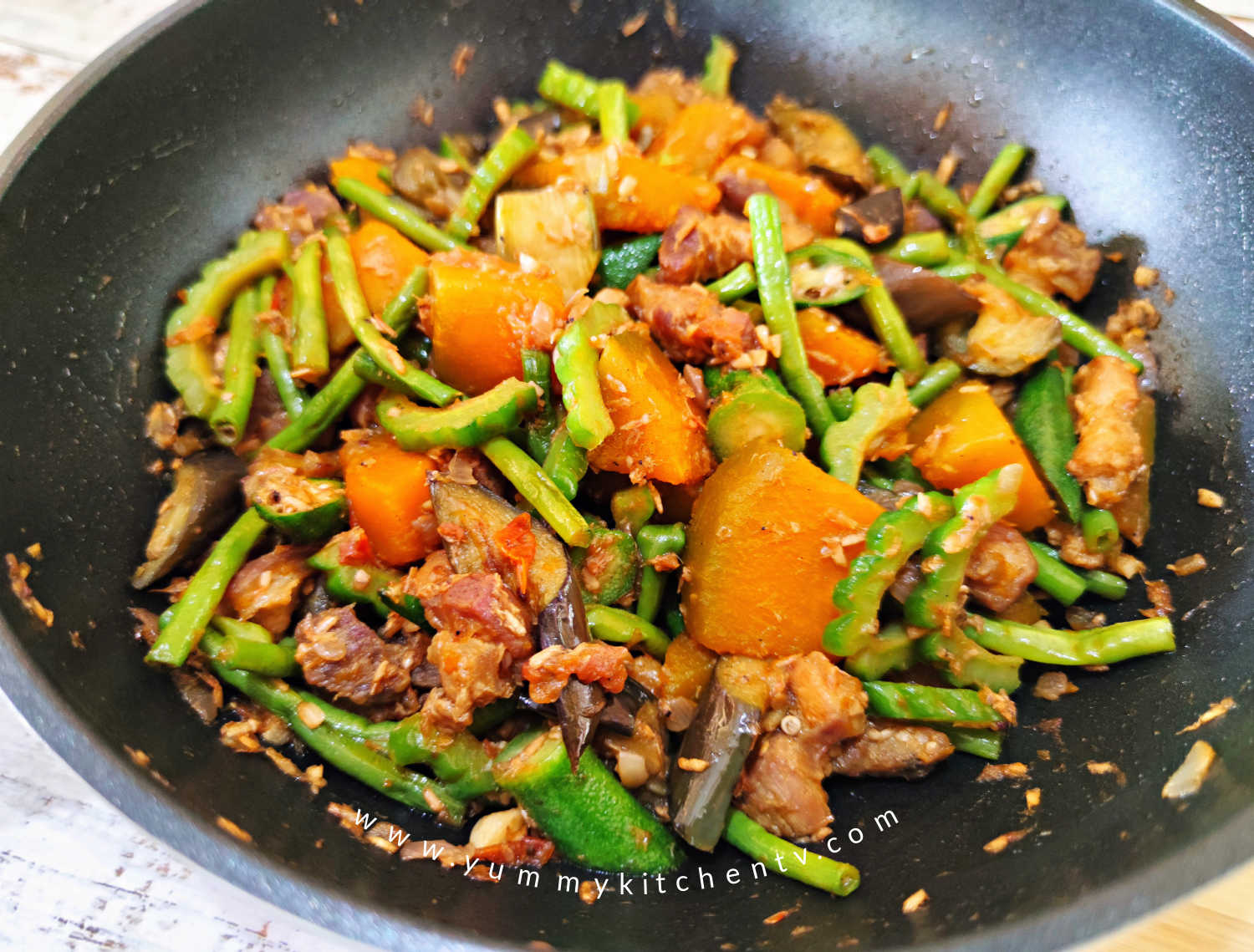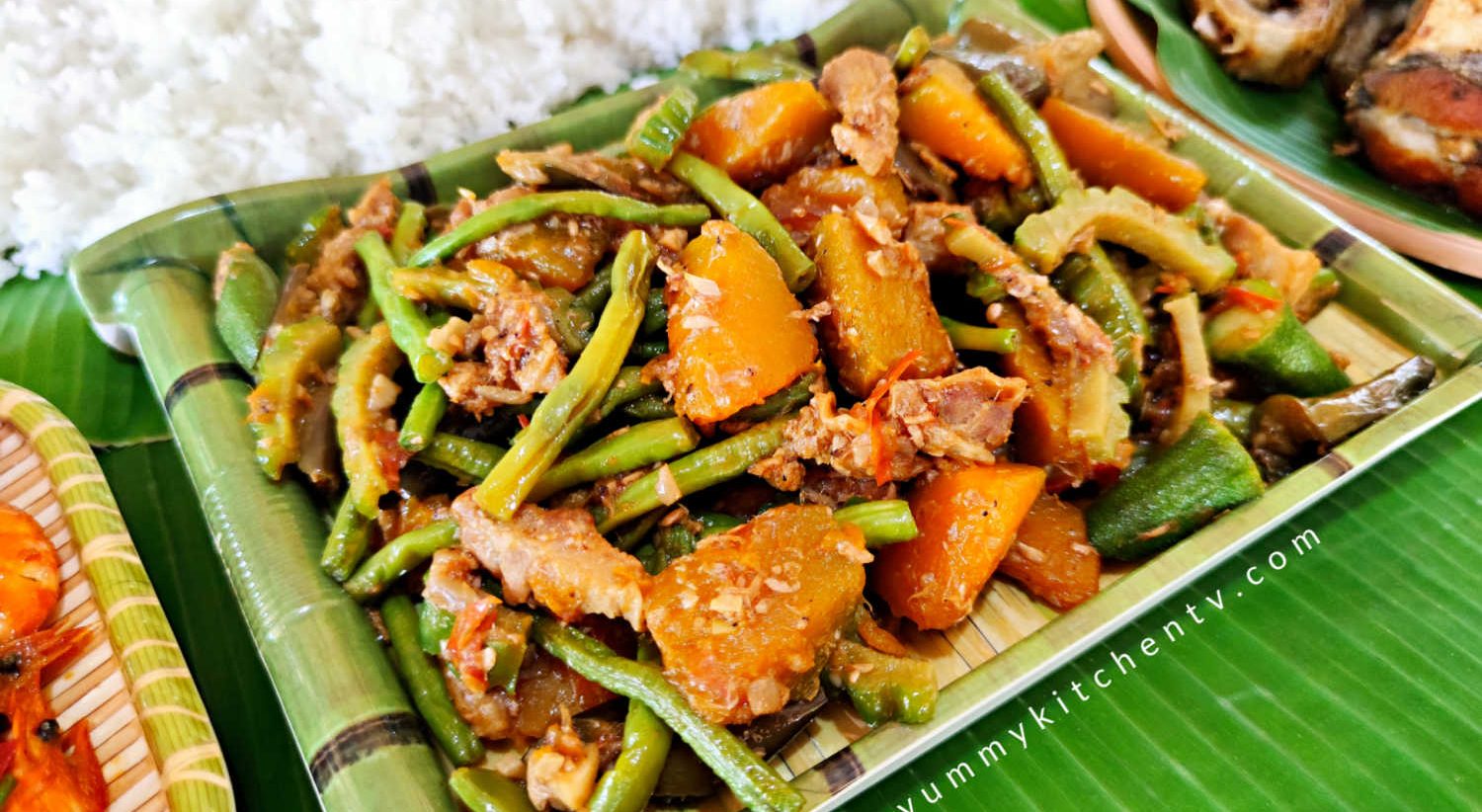Embark on a gastronomic adventure as we delve into the vibrant flavors of Pinakbet Tagalog, a beloved dish that epitomizes the rich culinary heritage of the Philippines. With its medley of fresh vegetables, savory meat, and aromatic spices, Pinakbet tantalizes the taste buds and nourishes the soul, making it a cornerstone of Tagalog cuisine.
In this comprehensive guide, we’ll explore the origins, ingredients, cooking methods, regional variations, cultural significance, and modern adaptations of Pinakbet. Join us on a culinary journey that celebrates the diversity and deliciousness of Filipino cuisine.
Introduction to Pinakbet
Pinakbet is a beloved Filipino vegetable stew that originated in the northern regions of the Philippines, particularly in the Ilocos region. It is a hearty and flavorful dish that showcases the abundance of fresh produce available in the country. Pinakbet is a testament to the Filipinos’ love for vegetables and their ability to create delicious and nutritious meals using simple ingredients.
The name “pinakbet” is derived from the Ilocano word “pinakebbet,” which means “shrunk” or “wilted.” This refers to the cooking process where the vegetables are cooked in a small amount of liquid until they become tender and slightly reduced in size.
Significance of Pinakbet in Tagalog Cuisine
Pinakbet holds a special place in Tagalog cuisine as it represents the traditional Filipino values of family, community, and sharing. It is a dish that is often served during special occasions and family gatherings. The abundance of vegetables in the dish symbolizes prosperity and good fortune.
Pinakbet is also a versatile dish that can be easily customized to suit different tastes and preferences.
Ingredients and Nutritional Value

Pinakbet is a delicious and nutritious dish that is a staple in Filipino cuisine. It is made with a variety of vegetables, including squash, eggplant, tomatoes, okra, and green beans. These vegetables are cooked in a flavorful sauce made with bagoong (shrimp paste) and coconut milk.The
ingredients in pinakbet are all packed with nutrients. Squash is a good source of vitamin A, vitamin C, and fiber. Eggplant is a good source of antioxidants and fiber. Tomatoes are a good source of vitamin C and lycopene. Okra is a good source of vitamin C, fiber, and potassium.
Green beans are a good source of vitamin K, vitamin C, and fiber.The nutritional value of pinakbet varies depending on the ingredients used and the amount of each ingredient. However, a typical serving of pinakbet contains approximately:| Ingredient | Quantity | Calories | Protein | Carbohydrates ||—|—|—|—|—|| Squash | 1 cup | 40 | 1g | 9g || Eggplant | 1 cup | 20 | 1g | 5g || Tomatoes | 1 cup | 25 | 1g | 6g || Okra | 1 cup | 30 | 2g | 7g || Green beans | 1 cup | 30 | 2g | 7g || Bagoong | 1 tablespoon | 20 | 1g | 4g || Coconut milk | 1 cup | 400 | 4g | 40g |Pinakbet is a healthy and delicious dish that is a good source of vitamins, minerals, and fiber.
It is a great way to get your daily dose of vegetables and is a popular choice for vegetarians and vegans.
Step-by-Step Cooking s
Preparing Pinakbet involves several key s. Follow these s carefully to ensure a delicious and authentic dish.
Preparing the Vegetables
- Wash and cut the vegetables into bite-sized pieces.
- Set aside the sitaw (string beans), kalabasa (squash), and ampalaya (bitter melon).
- In a separate bowl, combine the eggplant, okra, and tomatoes.
Cooking the Meat (if desired)
If you’re adding meat to your Pinakbet, follow these s:
- Season the pork or beef with salt and pepper.
- Brown the meat in a separate pan over medium heat.
- Set aside the browned meat.
Simmering the Dish
- In a large pot, heat the oil over medium heat.
- Add the onions and garlic and sauté until softened.
- Add the eggplant, okra, and tomatoes and cook for 5 minutes.
- Add the sitaw, kalabasa, and ampalaya and cook for an additional 5 minutes.
- Add the meat (if using) and the shrimp paste (bagoong).
- Season with salt and pepper to taste.
- Add enough water to cover the vegetables and bring to a boil.
- Reduce heat and simmer for 15-20 minutes, or until the vegetables are tender.
Adding the Finishing Touches
- Once the vegetables are tender, add the sitaw (string beans) and kalabasa (squash).
- Cook for an additional 5 minutes, or until the sitaw is cooked through.
- Remove from heat and stir in the ampalaya (bitter melon).
- Serve hot with rice.
Serving Suggestions and Accompaniments
Pinakbet is typically served hot as a main dish, accompanied by a variety of traditional sides that enhance its flavor and complete the dining experience.
These accompaniments play a significant cultural role in Filipino cuisine, representing the diverse culinary traditions and preferences of different regions.
Rice
Rice is the most common accompaniment to Pinakbet, serving as a staple food in Filipino culture. It provides a neutral base that balances the rich flavors of the dish and helps absorb its savory juices.
Pinakbet in Modern Cuisine

In modern cuisine, Pinakbet has undergone several evolutions to cater to contemporary tastes and dietary preferences.
One notable trend is the creative use of ingredients. Chefs have experimented with adding non-traditional vegetables to the dish, such as broccoli, bell peppers, and even exotic fruits like starfruit. These additions bring a vibrant mix of flavors and textures to the traditional recipe.
Fusion Dishes
Pinakbet elements have also found their way into fusion dishes. Some chefs have combined it with Western ingredients, such as grilled meats or pasta, creating unique and innovative culinary experiences.
Adaptations for Different Dietary Needs
To meet the needs of diners with dietary restrictions, Pinakbet has been adapted in various ways. Vegetarian versions omit the bagoong and use plant-based substitutes for the pork. For gluten-free diets, chefs have developed recipes using alternative grains like quinoa or millet instead of rice.
Cultural Significance of Pinakbet
Pinakbet, a beloved Filipino dish, holds immense cultural significance in Tagalog society. It transcends mere culinary delight, becoming an integral part of family gatherings, celebrations, and daily life. The dish’s versatility and affordability make it accessible to people from all walks of life, fostering a sense of unity and shared identity.
Symbolism and Traditions
Pinakbet is often regarded as a symbol of abundance and prosperity. Its vibrant mix of vegetables represents the diverse blessings bestowed upon the Filipino people. The dish is frequently served during special occasions, such as weddings and birthdays, to convey wishes for happiness, health, and prosperity.
Moreover, the communal act of preparing and sharing pinakbet reinforces family bonds and a sense of togetherness.
Last Recap
As we bid farewell to our culinary exploration of Pinakbet Tagalog, let us remember its significance as a symbol of family, tradition, and the vibrant tapestry of Filipino culture. May this dish continue to grace our tables and warm our hearts for generations to come.
Whether enjoyed in its traditional form or reimagined in contemporary creations, Pinakbet will forever remain a testament to the enduring power of Filipino cuisine.
Q&A
What are the key ingredients in Pinakbet Tagalog?
The essential ingredients of Pinakbet include eggplant, okra, tomatoes, string beans, bitter melon, and squash. These vegetables are simmered in a savory broth made with pork or shrimp paste, creating a harmonious blend of flavors.
How do regional variations of Pinakbet differ?
Regional variations of Pinakbet showcase the diverse culinary traditions of the Philippines. In the Ilocos region, for example, Pinakbet is often made with fermented fish sauce instead of shrimp paste. In Pampanga, the dish is known as “sisig” and includes pork belly and pig’s brain.
What are the traditional accompaniments served with Pinakbet?
Pinakbet is typically served with steamed rice, which acts as a canvas for the flavorful broth and vegetables. Other common accompaniments include fried fish, grilled pork, and bagoong (fermented shrimp paste), which adds a salty and umami kick.
How has Pinakbet evolved in modern cuisine?
In modern culinary interpretations, Pinakbet has been reimagined in creative and innovative ways. Chefs have experimented with different ingredients, such as tofu, mushrooms, and even seafood, to create unique and contemporary versions of the dish. Fusion dishes incorporating Pinakbet elements have also emerged, showcasing the versatility and adaptability of this beloved Filipino delicacy.
